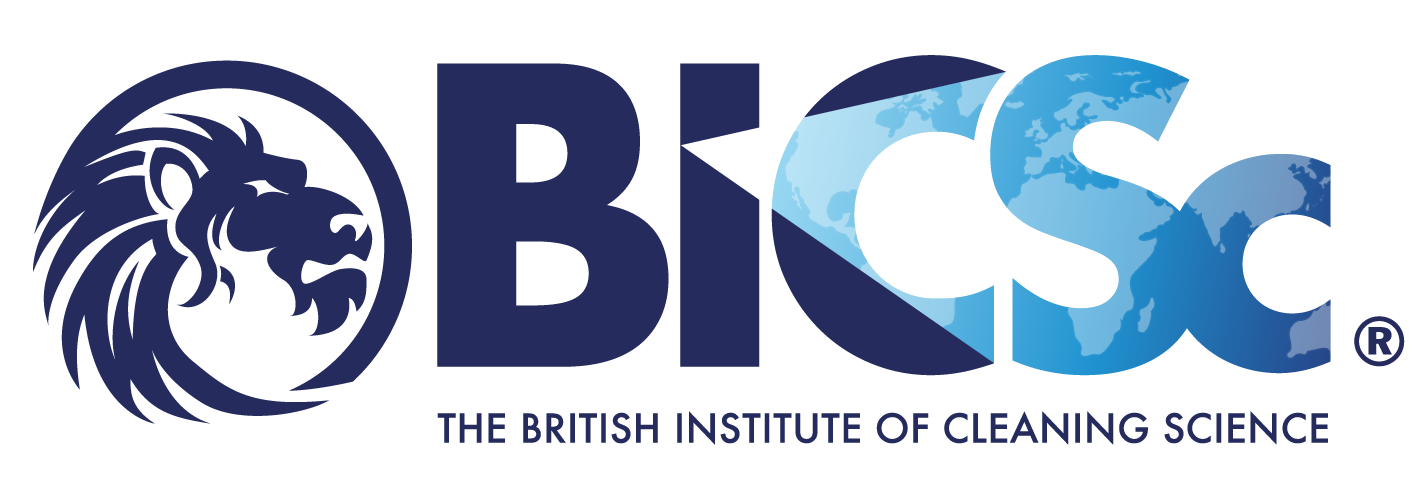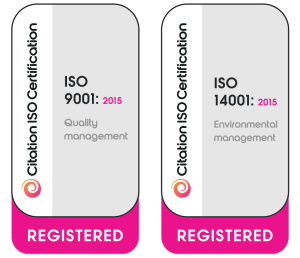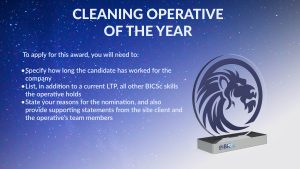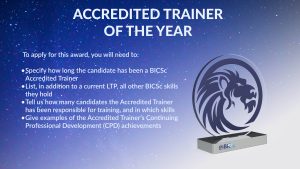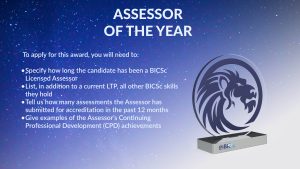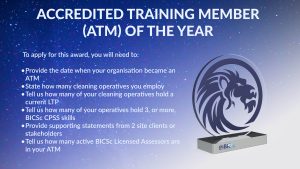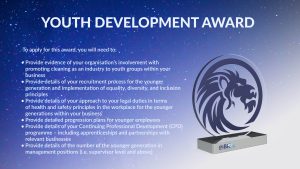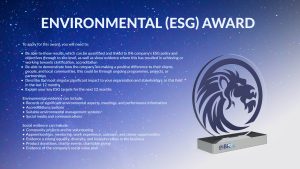
Members Q & A | Educational Sector Session Summary
BICSc Members Educational Facility Q & A/Briefing Session Summary
Wednesday 12th August 2020 11am
Chris Ryan, Head of International Business and Kim Phillips, Head of Service Catering & Cleaning Rotherham MBC opened the session with the following comments:
CR: The impact of COVID-19 has affected us all on a global scale. As the number of cases reduces, the return for the Education sector is at various stages dependent on geographical location.
The government aim is to get all schools open at the beginning of the Autumn term in September. All education premises will be adhering to localised and governmental guidelines to ensure the safety of staff, students and pupils returning.
- The main guidance for schools has been issued by the Department for Education and endorsed by Public Health England (gov.uk – Guidance for full opening: schools).
- The main guidance for Higher Education (gov.uk – Higher Education: reopening buildings and campuses).
Guidance provides the Public Health Advice and details the actions to minimise the risk of transmission within the education environment endorsed by Public Health England.
The system of controls that have been introduced is there to minimise risks and create safer environments effectively. Premise risk assessments must be completed, and all control measures put in place to help mitigate that risk. Applying the control measures will contribute to stopping the virus entering the facility and being transmitted.
The control measures include:
- Anybody ill should stay at home – including anyone showing symptoms such as a high temperature, a new continuous cough for more than an hour or three or more episodes within a 24-hour period, a loss or change to your sense of smell or taste.
- Promote robust hand and respiratory hygiene – handwashing with soap and water for at least 20 seconds and containing any coughs or sneezes.
- Enhanced cleaning arrangements – putting an enhanced cleaning schedule in place. More frequent cleaning of rooms or shared areas used by different groups. Cleaning frequently touched surfaces. Regular cleaning of toileting facilities. Guidance provided in the gov.uk Public Health England COVID-19 cleaning in non-healthcare settings outside the home document.
- Active engagement with the NHS Track and Trace system.
- Consideration of how to reduce contacts – social distancing and the implementation of adherence to social distancing guidelines.
Cleaning service providers have a key role to play with the enhanced cleaning arrangements as part of the detailed control measures. Input will be critical for the successful implementation of effective control measures for cleaning. Premises managers will be looking at service providers for answers and support in order to get their building open, safe and fully operational.
As professional service providers, we need to communicate effectively with our clients. One of their biggest challenges will be allaying any fears that some building users may have on returning back to the education environment.
In our industry, credentials and accreditations demonstrate our commitment to the service we provide. We need to promote competence in order to offer that reassurance and instil peace of mind. We need to be able to display our professionalism, evidence our experience and knowledge of what we do and how we do it. We need to apply process and methodology in order to reassure and promote confidence during the return phase and the ongoing commitment.
Communication and client engagement have never been so vital.
- We need to know that building risk assessments have been completed and that the necessary control measures have been implemented.
- We need to engage with the client and review the need for any increased cleaning frequencies based on the risk assessments. We need to identify the touchpoints, the only way to understand the level of input required is to physically walk and map the more common routes and identify the items that will be deemed as regular touchpoints and create the appropriate schedule.
- We need to discuss and understand any change to the building use, any impact on normal daily routines identified in the risk assessment and the effect and impact of any increased frequencies which may require more time and resource to deliver.
- We need to engage with our operatives to ensure availability to cover any increases in frequency.
- We need to monitor and record the cleaning activity, having visibility of cleaning operatives will certainly help to allay building users fears and contribute to building confidence. By keeping records of the cleaning activity and having it visible for all building users to see promotes the commitment and reinforces the level of activity taking place within the building. These steps will all help on the road to recovery and highlight the extra measures that have been put in by the building management team demonstrating that they are making everyone feel comfortable and doing everything that is reasonably practicable to keep that environment safe.
- We need to work closely with our clients, they need to communicate all increases in activity amongst all building users actively. Hence, it builds awareness, and building users can respect and work alongside the operatives carrying out their tasks.
- We need to audit and review the process to ensure it aligns with the risk assessment and that the cleaning schedule is being met and standards are being achieved. Regular review meetings with the client will ensure expectations are being agreed, planned, delivered, met and communicated to all.
- Collectively all elements will be positive steps in building that confidence for building users to feel comfortable that their safety and welfare is a key priority.
In regard to our cleaning operatives, we also need to ensure we are supporting them and enabling them to feel safe operating back in the workplace.
We need to:
- Ensure that all health and safety processes are in place and reinforced. Operatives need to display an awareness for themselves and others within the building they operate in.
- Ensure they adhere to the control measures of the premises.
- Ensure that operatives are trained and competent in the skills required to carry out the tasks effectively and efficiently through correct application and methodology.
- Ensure that they apply good hygiene practices, effective handwashing.
- Ensure the correct use of PPE for any task if required.
- Ensure any product in use is fit for purpose and has all credible data on its effectiveness.
- Ensure all relevant documentation including MSDS, COSHH Records, Risk Assessments & SSOW are in place.
- Ensure chemical competence is being applied and understand the dilution rates to provide a product that will offer its optimum performance in use.
- Ensure that they understand the desired outcomes and expectations and how to achieve acceptable standards.
- Provide any additional training if required. Regular communication, toolbox talks, reinforcement is key.
- Support and praise them for their work, it’s a challenging time, and a little praise goes a long way.
When we consider the responsibilities of providing a cleaning service during the current pandemic, it’s very clear to see how cleaning is now recognised as an essential service. We have an important role in getting these buildings open, providing safe environments, and working together with the clients to manage any risk.
Kim Phillips: Head of Service Catering & Cleaning – Rotherham MBC
In house educational provision (78 schools equate to 68% of the potential market) – only two other commercial providers as the majority of schools have chosen to employ the cleaning operatives directly. Only had two schools close completely throughout this period. The cleaning service has continued to clean the school environment of the contracted schools along with a number of other schools, primaries in particular, whose cleaning staff were shielding/refusing to work.
The service also covers civic building cleaning, emergency crash pads, community residents (flats, wardens) and VOIDS properties, so we have a large pool of staff to draw on and experience of different environments.
The last five months have been a daily logistical challenge – for those who will recognise the comment that was heard in the first few weeks to say it’s like a snow day that keeps on going, like Groundhog Day.
The risk assessments were the first priority along with clarification from HSE and Public Health on the correct products for specific needs, PPE or not for regular cleaning which then enabled instructions and any additional training to take place.
CLEANING STAFF NEED TO UNDERSTAND THE POSITION, TO FEEL CONFIDENT TO UNDERTAKE THE ACTIVITIES.
The area managers have spent weeks glued to the phone, allocating and re-allocating operatives to high demand which the day after was low demand – key workers and vulnerable pupil attendance varied dramatically from day to day – the area managers were also helping in a counselling role, not only for our own teams but for school teaching staff who needed the reassurance and our cleaning operatives were effectively elevated to almost celebrity status seemingly becoming experts in infection control – again this needed to be managed.
Each school’s cleaning activities have been considered in line with the school building risk assessment, and a flexible approach has been taken to provision.
The one area which has taken some work is to achieve the guidance on enhanced frequency. School cleaning has over the last few years been an easy target for saving. Therefore, the approach has been to establish a base level to ensure the increased frequency is effective.
The majority of Rotherham Schools who have a contract or have had interaction with the Council Cleaning Service will have a reactive cleaning provision in September at lunchtime, some have also chosen to also have an interim clean in washrooms and high-frequency contact points after break periods, and work has been undertaken with SMSA’s and TA’s to facilitate wipe down of tables/chairs and touchpoints in dining rooms and classrooms. Advice has generally been to use a quality bacterial wipe for this to avoid having to mix chemicals, concerns regarding adverse reactions to the chemicals by pupils/staff and to ensure an area is left free from product after a quick turnaround clean.
The morning and afternoon scheduled cleaning has been reviewed and re-focused in line with the building risk assessments. This is not a one size fits all. It is a moving entity, I am expecting, as has been the position through-out the lock-down, that requirements in each school will change constantly. The area manager will need to react to customer requirements and government guidance be it Public Health, HSE or DFE.
Q & A:
What is being supplied in terms of cleaning/sanitising wipes/products for teaching, labs and communal areas?
KP: Dependent on the requirements of the site and the site risk assessment has determined any need for wipes. Wipes can help with staff confidence. We made a decision to provide building wipes, dispensers (Council buildings) for staff to wipe down; however, this is in addition to other enhanced measures. Wipes for mobile units, i.e. if staff are out and have equipment.
CR: The starting point would be to look at what is the current cleaning input. Is it daily, is there an am and pm input or are they already working on reduced frequencies such as every other day for certain rooms or tasks.
The current input has to be right and fit for purpose before introducing any options to increase and build in any enhanced cleaning frequencies. Any additional cleaning could result in increased cost unless the input is offset against current cleaning regimes or based on any change in building use or reduced occupancy that can affect daily service provision. It’s important to discuss with the client to understand any revisions to the building use and establish the required need and expectation.
If you were to supply wipes, they would need to be COSHH assessed, risk assessed, provide SSOW, will users receive any training? Also, the cost will be a big consideration, will the client be willing to purchase?
Cleaning and enhanced cleaning enables a process that can be controlled, recorded, measured and monitored and delivered by trained and accredited operatives.
What changes have been made to daytime cleaning routines to allow for the regular cleaning of contact points and key surfaces?
KP: Many sites will introduce a daytime provision where it isn’t done at present to account for increased enhanced cleaning frequencies, and this will be based on the premises risk assessment for individual site requirements. Daytime presence helps to allay fears and promote confidence in hygiene standards being applied. HIGH VOLUME, HIGH USAGE.
Of course, this is not effective on its own and must be in addition to all other COVID compliant advice, such as handwashing, distancing and sanitising.
CR: It’s not unusual for a school not to have any daytime provision with general cleaning being delivered out of hours. To deliver enhanced cleaning will result in more visibility, and this in turn will help to create that peace of mind for building users. The schedule has to be right as stated earlier. The risk assessment will help to identify what needs to be done and when and this will create the revised schedule as covered in the initial brief.
What would be the best products for giving the classrooms to clean the desks etc, for the use by the teachers?
CR: As per the previous question, are wipes the answer? It’s important to get the cleaning schedule and frequencies right and as advised using standard cleaning detergent. Only this weekend, I was talking with my son’s girlfriend who is a teacher at a primary school and have been issued baby wipes that have had bleach poured into the plastic dispensing packs. Frightening, but I’m sure there are plenty more bad practices going on. Mixing chemicals, no PPE, no training, no understanding of the impact on applying such a process. Education is imperative, and service providers have a responsibility to educate and support clients in doing the right thing.
Also, the secondary issue resulted in blocked toilets as wipes were being used in the toilets then flushed down the toilet. Wipes don’t break down like paper so therefore caused the blockage and the call out for rectifying the issue. If the premise wants to provide wipes for staff to use, then it needs to be detailed in the risk assessment and controlled accordingly.
Cleaning and enhanced cleaning enables a process that can be controlled, recorded, measured and monitored and delivered by trained and accredited operatives.
How are your operatives now working? Would you say flow cleaning is now better or individual?
KP: We have had reduced staff and therefore focussed cleaning on the areas in use, schools have been similar with focused cleaning on the areas in use.
CR: How the service is delivered is down to the service provider. Some use Zone Cleaning and some use Team Cleaning or Flow as per the question. Zone Cleaning concentrates on individual areas for each operative, and Team Cleaning is based on each operative being a task specialist within the team. If a premise currently operates Zone Cleaning it would face difficulties in setting up Team Cleaning not to mention the resistance to change, the consultation process and no doubt union involvement all of which contribute to a lengthy process to change at a time when we need operatives to pull together. Team Cleaning has its advantages if implemented well and generally on new start-ups it can be implemented from the start of a contract where the operational transition is generally easier to manage and succeed with effective implementation. It’s all down to personal choice.
A disinfectant being used in some schools contains, according to MSDS, Cationic surfactants, i.e. Didecyldimethyl Ammonium Chloride 1-10%. The hard surface cleaner we are currently using contains Anionic surfactants < 5%, according to its MSDS. Could these chemicals cancel each other out on surfaces?
CR: In short, the answer is yes, cationic surfactants carry a positive charge, and anionic surfactants carry a negative charge. Therefore, they will cancel each other out rendering the process ineffective.
We always advise that when choosing products, you actively engage with your manufacturers/suppliers to identify what products best suit your working environment. Their experience and knowledge should help you to select compatible products that are creditable, meet any testing regulation and are independently tested and proven to give you the most effective and efficient results in use. They will also provide you with all relevant documentation such as MSDS, Technical Specification Sheets and Microbiological Profiles as well as any additional testing documentation. A good supplier will support you with dilution charts, process guides and training.
It’s an important relationship, so please use it to get your service delivery right.
There is a misconception that disinfection needs to be high frequency. The fact is there is no need to over disinfect, and for none healthcare environments, generic detergent is all that is required with the introduction of enhanced frequencies.
There is no need to over disinfect. It has been reported that excessive use of disinfectants has resulted in supply shortages which isn’t good news for the healthcare and care home sectors which need the disinfectants operating in areas of higher risk and the need for heightened hygiene levels. Use your risk assessments to determine the need and only use disinfectants when you have confirmed cases. If you have a requirement to use a disinfectant with any confirmed cases of COVID-19, then ensure they are fit for purpose and seek advice from your manufacturer/supplier.
Our Mission
The British Institute of Cleaning Science is the largest independent, professional and educational body within the cleaning industry with over 40,000 Individual and Corporate Members in the UK and Internationally.
To raise the standards of education and to build awareness of the cleaning industry through professional standards and accredited training, thereby;
- Protecting the Operative
- Providing a Clean and Safe Environment
- Preserving Assets
- Promoting Sustainability
- Producing Best Practice
Contact Us
9 Premier Court
Boarden Close
Moulton Park
Northampton
NN3 6LF
Email: [email protected]
Tel: +44 (0)1604 678710
© BICSc 2024
Policy Documents | The British Institute of Cleaning Science
All Rights Reserved | Company Reg 1524014
